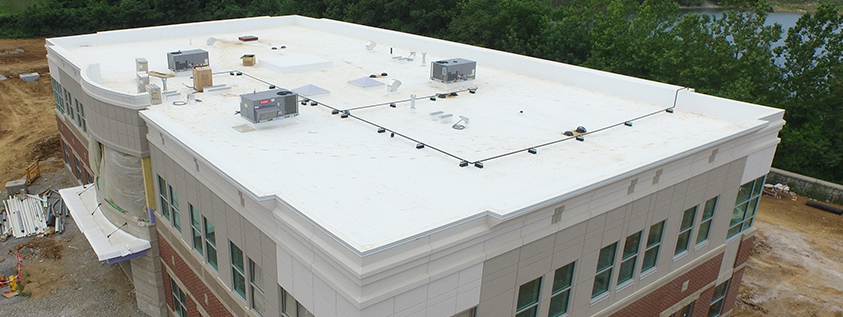What Is Roof covering Tar As Well As Exactly How Is It Utilized?
When to Tar a Roofing system
They use adhesives or mechanical fasteners to maintain the sheets in place. Tar and crushed rock roofing is suggested to be mounted on buildings that have level or low-slope roofings (i.e. no greater than 3 inches of surge for every 12 inches of size). Used in the USA for greater than 100 years, tar roofing systems were traditionally six-ply, suggesting that they had six layers of roofing material.
Flat roofing is vulnerable to ponding, when water remains on a roofing surface area for greater than two days. This excess of water areas raised weight on the roofing and also can transform the roofing system framework. Clinical depressions may also result, affecting the water drainage incline and also View website creating the merging to continue. Proceeded pooling may cause plants expanding on the surface of the roof.
What hasn't altered with tar and also gravel roofs is the final layer of crushed rock, included in shield against sun damages. A tar and also gravel roofing is very hefty as well as you might need to reinforce the supports for your roof before application. If it is left uncovered by the crushed rock and it is not normally advised in places that get a whole lot of snow or rainfall, strong sun exposure can harm the roof covering membrane. Periodically, tar as well as gravel roofing systems are prone to leakages, particularly if the underlayments are not appropriately mounted. Improper setup can cause significant damages and also it is extremely suggested to have your tar and crushed rock roofing system skillfully set up.
Analyze them for fractures along the sides and also top if your roofing has stucco parapets. These areas typically permit water to get in the wall and can create sores and creases in the roof covering surface. If you do not have parapets, examine the metal drip https://nouw.com/muallejcha/exactly-how-to-fix-your-roof-covering-dr-37251236 edge for a tight seal with the roof covering membrane. Use 4 ″ or 6 ″ roof textile covered under and also over with Split & Joint Sealant to secure fractures along drip sides, penetrations, and open seams.
Pros & Cons of Tarring

- Strong sun exposure can additionally harm the roof membrane layer if left uncovered by the crushed rock.
- It is occasionally susceptible to leaks, particularly if the flashing and underlayments are not correctly installed.
- Tar and gravel roofing is not generally suggested in areas with lots of snow or rainfall.
A tar as well as crushed rock roofing has a terrific roi due to the fact that it is economical and lasts a long time. In addition, called for repair work are much less regular because of the stamina of the materials. Many questionable roofing professionals and also some desperate do-it-yourselfers utilize tar to plug leakages as a fast solution without issue as to exactly how permanent the repair work are. Roof covering tar will in time dry out and also fracture which will certainly open the roof covering back up to the original leakage.
Plant life will grow roots, hold moisture, and degrade the roofing's surface. A tar and also crushed rock roofing should have an adequate drain system to prevent this trouble. Fixing and also seal roof infiltrations, rips, open seams, etc. utilizing Elastek 103 Fracture & Joint Sealer as well as reinforce with polyester roof material as needed.
How long does it take for roofing tar to dry?
When there is no debris left, you are Article source ready to apply tar to the roof. Start in the corner furthest from your ladder. Using small amounts at a time, apply the roofing tar with your roller in short and smooth strokes. Move away from the place where you started the application until you reach your ladder.
Apply a fresh new coat with a putty knife if you see damages to joints previously secured with a line of roof cement. And also, asphalt tiles make the warning signs of a major roof covering problem easily apparent. Comply with the 4 actions to repairing a dripping roof detailed ahead, as well as you may locate your issue short-lived.
Can you apply roofing tar in the rain?
Generally speaking, roof coatings take 8-24 hours to thoroughly dry. The time span difference really depends on weather conditions. Dew and high humidity will cause the coating to take longer to dry. Hot temperatures with dry weather will allow the coating to dry at a much faster rate.
